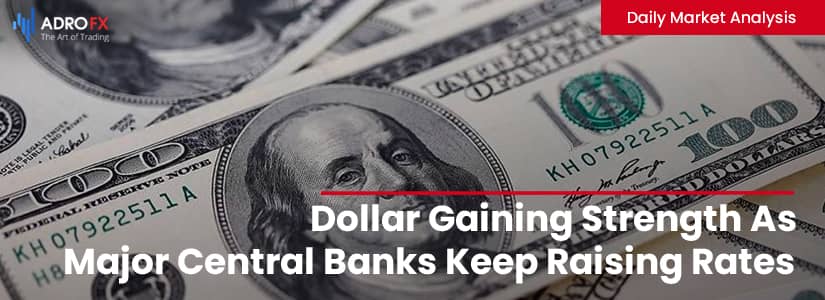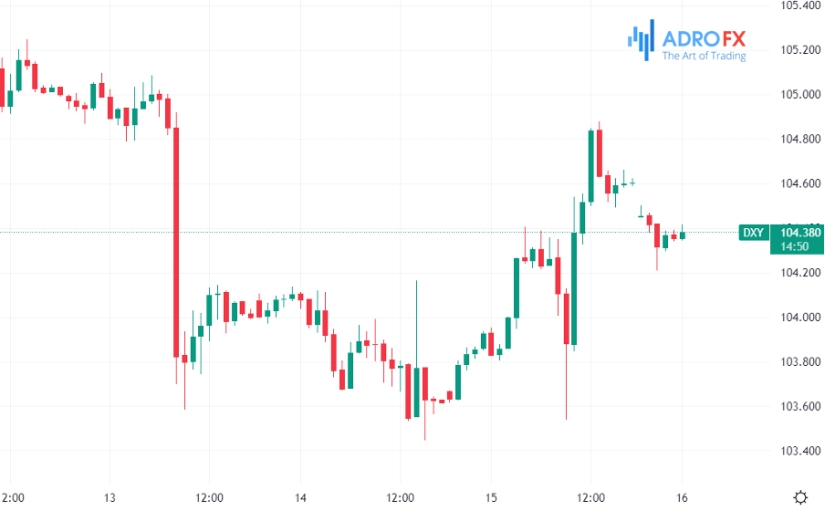Dollar Gaining Strength As Major Central Banks Keep Raising Rates | Daily Market Analysis

Key events:
- UK – Retail Sales (MoM) (Nov)
- UK – Composite PMI
- UK – Manufacturing PMI
- UK – Services PMI
- Eurozone – CPI (YoY) (Nov)
The dollar rallied against all Big Ten currencies on Thursday. This strengthening was very broad-based, with 85 of the 146 currencies tracked by Bloomberg falling against the U.S. competitor. Four major precious metals also lost ground.

The dollar's rally was driven by hawkish comments from the Fed on Wednesday evening. The Fed signaled it was ready to raise rates above 5% in 2023 and was willing to keep them at their peak throughout 2023, knowing it would trigger a recession but being willing to pay that price for controlling inflation. Equity markets in Europe and the U.S. fell sharply on Thursday. 2-year note yields rose slightly to 4.236%, while 10-year bond yields fell to 3.446%.

Apart from that, the ECB raised all three key interest rates by 50 basis points yesterday. The benchmark interest rate on loans was raised to 2.5%, the rate on deposits to 2%, and the rate on margin loans to 2.75%. ECB head Christine Lagarde sounded hawkish at the press conference, hinting to the market to prepare for several more rate hikes in the future. Also, the ECB intends to start cutting its balance sheet in March. This quantitative tightening will further stimulate a deterioration in financial conditions.
The Bank of England also raised its benchmark interest rate by 50bp to 3.5% p.a. which is a 14-year high. Here the central bank sounded somewhat dovish, suggesting that inflation may have already peaked. Two members of the Monetary Policy Committee (9 in all) believe that rates are already high enough to ease price pressures.
Briefly, what are the expectations of the money market right now:
- The Fed's federal funds rate is now 4.25%-4.50%. The market expects another +50bp in 2023 and then a 25 or 50bp decline by the end of the year.
- The Bank of England rate is now 3.5%. The swap market predicts a rise to 4.5% by August (another +100 bps). Prior to the rate meeting, quotes had been pricing in an increase to 4.6%.
- The ECB deposit rate is now 2%. The swap market expects it to rise to 3% in 2023 (+100 bps more). Prior to the rate meeting, quotes had been pricing in an increase of 2.9%.
The dollar index is down 9.9% from September's highs and looks like it deserves a correction. That's what the technical picture is hinting at. The Fed is hinting at it, telling the market that it has too much faith in the beneficial effects of the coming U.S. recession on the rate of slowing inflation, which will eliminate the need to raise rates above 5% and keep them that high until 2024.

DXY hourly chart
Markets have become accustomed over the years to coordinated monetary policy easing. But now we are in a phase of coordinated tightening, as the ECB and Bank of England may raise their rates by another 1% next year and the Fed by 50 or 75 bps. The UK recession is a fait accompli, the eurozone recession will be 100% a fait accompli next year. A moderate recession in the U.S. is very likely. China, judging by the latest statistical data, remains in the phase of the slowdown of economic activity, despite all efforts of the Chinese authorities to resist this trend. All of the above makes it impossible to place a bet on the further weakening of the dollar so far.










